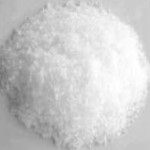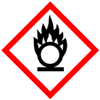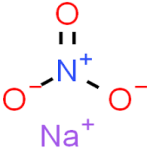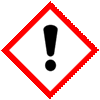CAS Number 7631-99-4, Sodium Nitrate GMP Grade Manufacturers Exporters







CAS Number 7631-99-4, Sodium Nitrate Manufacturer Exporter
For Properties Specifications of Sodium Nitrate Click Properties, Specifications of Sodium Nitrate Manufacturer.
For Uses of Sodium Nitrate Click Uses of Sodium Nitrate Manufacturer.
For For SDS MSDS Sheet of Sodium Nitrate Click SDS Safety Data Sheet MSDS Sheet of Sodium Nitrate Manufacturer.
The Properties and Specifications of Sodium Nitrate:
Sodium Nitrate
Sodium nitrate is the chemical compound with the formula NaNO3. This salt, also known as Chile saltpeter or Peru saltpeter (due to the large deposits found in each country) to distinguish it from ordinary saltpeter, potassium nitrate, is a white solid which is very soluble in water.
Sodium nitrate is used as an ingredient in fertilizers, pyrotechnics, as an ingredient in smoke bombs, as a food preservative, and as a solid rocket propellant, as well as in glass and pottery enamels.
Sodium Nitrate Specifications
Appearance: White or slightly off white to Light cream colour powder
Loss on drying: 1.00 % w/w Max
Purity (on dry basis): 99.00 % w/w Min
Synonyms: Chile Saltpeter; Cubic nitre; Soda nitre.
Molecular Weight: 85
Melting Point: 306C
Density: 2.26 gms/cm3
The Uses of Sodium Nitrate:
It has application in solid propellants, explosives, fertilizers, and for many other uses. Sodium nitrate is a common preservative used in cured meat products including bacon, deli meat, etc.
The MSDS-SDS Hazard Statement of Sodium Nitrate:
Sodium Nitrate SDS, Safety Data Sheet
MSDS Sheet, Material Safety Data Sheet 26-Jan-23
1. Product Identification
Product Name & Other Names: Sodium Nitrate or Chile saltpeter or soda niter or Sodium saltpeter or Nitric acid sodium salt or Nitratine.
CAS No.: 7631-99-4
EINECS: EC Number: 231-554-3
Molecular Weight: 84.99
Chemical Formula: NaNO3
Relevant uses and uses advised against (if any): Industrial Manufacturing.
2. Hazards Identification
GHS, Globally Harmonized System Classification in accordance with 29 CFR 1910
Classification according to Regulation (EC) No 1272/2008:
Oxidizing solids Category 3, H272
Acute Toxicity Oral Category 4, H302
Skin irritation Category 2, H315
Eye irritation Category 2A, H319
Specific target organ toxicity - single exposure Category 3, Respiratory system, H335
Labeling according to GHS & Regulation (EC) No 1272/2008
GHS Label Elements  Oxidizing Solid |
GHS Label Elements |
Signal Word: Warning
Hazard Statements:
H272: May intensify fire; oxidizer.
H302: Harmful if swallowed.
H315: Causes skin irritation.
H319: Causes serious eye irritation.
H335: May cause respiratory irritation.
Precautionary Statements
P210: Keep away from heat/sparks/open flames/hot surfaces – No smoking.
P220: Keep/Store away from clothing/…/combustible materials.
P221: Take any precaution to avoid mixing with combustibles.
P260: Do not breathe dust/fume/gas/mist/vapors/spray.
P270 Do not eat, drink or smoke when using this product.
P280 Wear protective gloves/protective clothing/eye protection/face protection.
P330: Rinse mouth.
P301+P312: IF SWALLOWED: Call a POISON CENTER or doctor/physician if you feel unwell.
P301+P330+P331 IF SWALLOWED: rinse mouth. Do NOT induce vomiting.
P302+P352: IF ON SKIN: Wash with soap and water.
P304+P340 IF INHALED: Remove victim to fresh air and keep at rest in a position comfortable for breathing.
P305+P351+P338: IF IN EYES: Rinse cautiously with water for several minutes. Remove contact lenses, if present and easy to do. Continue rinsing.
P310: Immediately call a POISON CENTER or doctor/physician.
P332+P313: If skin irritation occurs: Get medical advice/attention.
P337+P313 If eye irritation persists: Get medical advice/ attention.
P342+P311: If experiencing respiratory symptoms: Call a POISON CENTER or doctor/physician.
3. Composition/Information on Ingredients
Product Name & Other Names: Sodium Nitrate or Chile saltpeter or soda niter or Sodium saltpeter or Nitric acid sodium salt or Nitratine.
CAS No.: 7631-99-4
EINECS: EC Number: 231-554-3
4. First Aid Measures
Always seek medical attention after first aid measures are provided.
Inhalation: Remove to fresh air. If not breathing, give artificial respiration. If breathing is difficult, give oxygen. Get medical attention.
Ingestion: Never give anything by mouth to an unconscious person. Get medical attention.
Skin Contact: Wipe off excess material from skin then immediately flush skin with plenty of water for at least 15 minutes. Remove contaminated clothing and shoes. Get medical attention. Wash clothing before reuse. Thoroughly clean shoes before reuse.
Eye Contact: Immediately flush eyes with plenty of water for at least 15 minutes, lifting lower and upper eyelids occasionally. Get medical attention immediately.
5. Fire Fighting Measures
Flammability of the Product: The product is not flammable but it is an oxidizer.
Products of Combustion: It emits toxic oxides of carbon and oxides of nitrogen when heated to decomposition.
Fire: Sodium nitrate is an oxidizer.
Fire Extinguishing Media: Water spray. Use means suitable for extinguishing surrounding fire. Water spray, dry chemical, alcohol foam, or carbon dioxide.
Special Information: In the event of a fire, wear full protective clothing and NIOSH-approved self-contained breathing apparatus with full face piece operated in the pressure demand or other positive pressure mode. At high temperatures under fire conditions, it may produce toxic or irritating fumes. Fire-extinguishing work is done from the windward and the suitable fire-extinguishing method according to the surrounding situation is used. Uninvolved persons should evacuate to a safe place.
It may accelerate burning when involved in a fire. Increases the flammability of any combustible material. May ignite Combustibles (wood, paper, clothing, etc.). Flames up when heated to 540 deg. C. Mixture with charcoal ignites on heating. Contact with combustible or organic materials may cause fire.
It will react explosively with hydrocarbons. Interaction of nitrates when heated with amidosulfates (sulfamates) may become explosively violent owing to liberation of dinitrogen oxide and steam. Mixtures of sodium nitrate with powdered aluminum or its oxide were reported to be explosive. Mixtures of sodium nitrate and barium thiocyanate may explode. Mixture with sodium nitrate and powdered antimony explode. Mixture of sodium nitrate and sodium thiosulfate or sodium phosphinate explode.
6. Accidental Release Measures
Personal precautions, protective equipment, and emergency procedures: Avoid breathing dust/fumes/gas/mist/vapors/spray. Use individual protective equipment (waterproof boots, suitable protective clothing, safety glasses, etc.). Do not approach facing the wind.
Environmental precautions: Do not let the product enter drains, soil, or water sources.
Methods and materials used for containment Cleanup procedures and Storage: Do not inhale dust, vapors, mist, or gas. Avoid dust formation. Contain spilled material. Cover with an inert, non-combustible absorbent material, (e.g. sand, earth, diatomaceous earth, vermiculite). Use a shovel to put the material into a convenient waste disposal container. Finish cleaning by spreading water on the contaminated surface and allow to evacuate as per law.
7. Handling and Storage
Precautions for safe handling: Apply according to good manufacturing and industrial hygiene practices. Ensure proper ventilation. In case of insufficient ventilation, wear suitable respiratory equipment. Wash thoroughly after handling. Do not drink, eat, or smoke while handling. Avoid contact with skin, eyes, and clothing. Minimize dust generation. Avoid breathing dust/fumes/gas/mist/vapors/spray. Keep container tightly closed. Avoid ingestion and inhalation. Use individual protective equipment (waterproof boots, suitable protective clothing, safety glasses, etc.).
Conditions for safe storage, including any incompatibilities: Store in cool, dry, and ventilated area away from heat sources and protected from sunlight in tightly closed original container. Keep air contact to a minimum. Store protected from heat, sparks and ignition sources and incompatible materials. Avoid contact with skin and eyes. Avoid inhalation of dust/mist/vapor. Do not store with incompatible materials like strong oxidizing agents, strong acids, strong reducing agents, powdered metals, organic materials, and combustible substances.
8. Exposure Controls/Personal Protection
Exposure Limits: This product does not contain any hazardous materials with occupational exposure limits established by the region-specific regulatory bodies.
Ventilation System: A system of local and/or general exhaust is recommended to keep employee exposures as low as possible.
Personal Respirators (NIOSH Approved): For conditions of use where exposure to dust or mist is apparent and engineering controls are not feasible, a particulate respirator may be worn.
Skin Protection: Wear protective gloves and clean body-covering clothing.
Eye Protection: Use chemical safety goggles and/or full face shield where dusting or splashing of solutions is possible. Maintain eye wash fountain and quick-drench facilities in work area.
Other Control Measures: Maintain good housekeeping in work area. Handle in accordance with good industrial hygiene and safety practice.
9. Physical and Chemical Properties
Appearance: White crystals or powder or granules.
Odor: None
Odor threshold: Not available.
pH: 6-9 at 1% solution at 25 C (77F)
Relative density: around 2.26
Boiling Point: Decomposes at 380C.
Melting Point: 307C.
Flash point: Not available.
Auto-ignition temperature: Not available.
Decomposition temperature: Not available.
Upper/lower flammability or explosive limits: Not available.
Vapor pressure: Not available.
Vapor density: Not available.
Evaporation rate: Not available.
Flammability (solid, gas): Not available.
Partition coefficient: n-octanol/water: Not available.
Solubility: Readily soluble in water
Viscosity: Not available.
10. Stability and Reactivity
Stability: Stable under ordinary conditions of use and storage.
Hazardous Decomposition Products: It emits toxic oxides of nitrogen along with sodium oxide when heated to decomposition.
Hazardous Polymerization: Will not occur.
Incompatibilities: Strong acids, Strong reducing agents, powdered metals, Organic materials. Avoid all combustible materials and metals. Contact with barium rhodanide, boron phosphide, cyanides, sodium thiosulfate, sodium hypophosphite, sulfur plus charcoal, powdered aluminum and aluminum oxide may cause an explosion.
Conditions to Avoid: Moisture, Heat, Incompatibles.
11. Toxicological Information
Toxicity to Animals:
LD50 Oral - Rat - 3.430 mg/kg
LD50 Dermal - Rat - > 5.000 mg/kg
LD50 Intravenous - Mouse - 175 mg/kg
Carcinogenicity: No component of this product present at levels greater than or equal to 0.1% is identified as possible or confirmed human carcinogen by IARC, ACGIH, OSHA and NTP.
Mutagenic Effects: Mutagenic for bacteria and/or yeast. May cause damage to blood.
Developmental Toxicity: Not available.
12. Ecological Information
Toxicity to fish: static test LC50 - Gambeson affinis (Mosquito fish) - 6,650 mg/l - 96 h
Fathead minnow: GT 1000 mg/L 96-h LC50; Water flea: GT 1000 mg/L LC50
Toxicity to daphnia and other aquatic invertebrates: EC50 - Daphnia magna (Water flea) - 6,000 mg/l - 24 h
Results of PBT and vPvB assessment: This substance/mixture contains no components considered to be either persistent, bioaccumulative and toxic (PBT), or very persistent and very bioaccumulative (vPvB) at levels of 0.1% or higher.
13. Disposal Considerations
Whatever cannot be saved for recovery or recycling should be managed in an appropriate and approved waste disposal facility.
14. Transport Information
DOT USA, TDG Canada & ADR/RID Europe:
UN-Number: 1498 Class: 5.1 Packing group: III
Proper shipping name: Sodium nitrate
Marine pollutant: No
Poison Inhalation Hazard: No
IMDG/IMO:
UN-Number: 1498 Class: 5.1 Packing group: III EMS-No: F-A, S-Q
Proper shipping name: Sodium nitrate
Marine pollutant: No
IATA/ICAO:
UN-Number: 1498 Class: 5.1 Packing group: III
Proper shipping name: Sodium nitrate.
15. Regulatory Information
USA:
SARA 311/312 Hazards: See section 2.
California Prop 65: Not listed.
Section 16 - Additional Information
DISCLAIMER: The information and recommendations set forth herein are presented in good faith and believed correct as of the date hereof. It is compiled from various sources and it is not necessarily all inclusive nor fully adequate in every circumstance. In addition, these suggestions should not be confused with nor followed in violation of applicable laws, regulations, rules or insurance requirements applicable. This MSDS sheet is intended only as a guide to the appropriate precautionary handling of the material by a properly trained person using this product. Individuals receiving the information must exercise their independent judgment in determining its appropriateness for a particular purpose.
Anmol Chemicals & Pharmaceuticals Pvt. Ltd. is an off-shoot of Anmol Chemicals Taloja. It is located in MIDC Taloja and it is manufacturing pharmaceutical grades of API, Excepients, Food grade and Reagent grade chemicals. Anmol Chemicals & Pharmaceuticals Pvt. Ltd. is a several decades old group of companies, engaged in manufacturing, supplying, distributing, wholesale supplies for actual users, retail or small pack supplies for research and development chemicals, fine and speciality chemicals, pharmaceutical excipients, mineral fortifiers in chemically pure, Analytical reagent grade, IP BP USP Ph Eur EP JP and other pharmaceutical grade monograph including FCC Food grade chemicals and Nutraceuticals, Mineral Fortifiers at best prices.

Sodium Nitrate Structure
CAS Number 7631-99-4, Sodium Nitrate Manufacturer Exporter
ANMOL CHEMICALS & PHARMACEUTICALS Pvt. Ltd.
India, USA, Europe, UAE
TELEPHONE: +912223770100
Navi Mumbai, INDIA
e-mail: info(At the rate i.e. @)anmol.org
Copyright. 25-nov-24
We manufacture:


